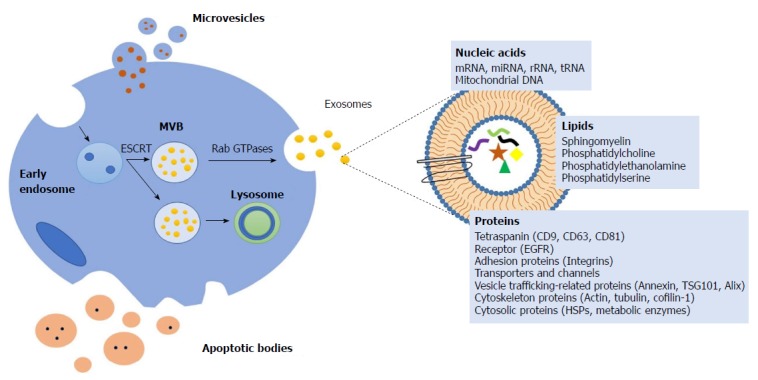Figure 1.

Mechanisms of formation extracellular vesicles and composition. The early endosome is generated by invagination of the plasma membrane. The consequent fusion of endocytic vesicles mediated by the endosomal sorting complex responsible for transport (ESCRTs), formed multivesicular bodies (MVBs). MVBs can be degraded in the lysosome or released the intraluminal vesicles known as exosomes by the fusion of MVBs to the plasma membrane mediated by Rab GTPases. Microvesicles are generated by outward budding from the plasmatic membrane. Apoptotic bodies are generated during programmed cell death or apoptosis. The composition of extracellular vesicles (EVs) includes proteins (tetraspanins, receptors including epidermal growth factor receptor (EGFR), adhesion proteins, transporters and channels, vesicle trafficking-related proteins, cytoskeleton proteins and cytosolic proteins), lipids (sphingomyelin, phosphatidylcholine, phosphatidylethanolamine, phosphatidylserine) and nucleic acids (messenger RNA (mRNA), microRNA (miRNA), ribosomal RNA (rRNA), transfer RNA (tRNA), mitochondrial DNA (mtDNA)). ESCRTs: Endosomal sorting complex responsible for transport; MVBs: Multivesicular bodies; EVs: Extracellular vesicles; EGFR: Epidermal growth factor receptor; mRNA: Messenger RNA; miRNA: MicroRNA; rRNA: Ribosomal RNA; tRNA: Transfer RNA; mtDNA: Mitochondrial DNA.
